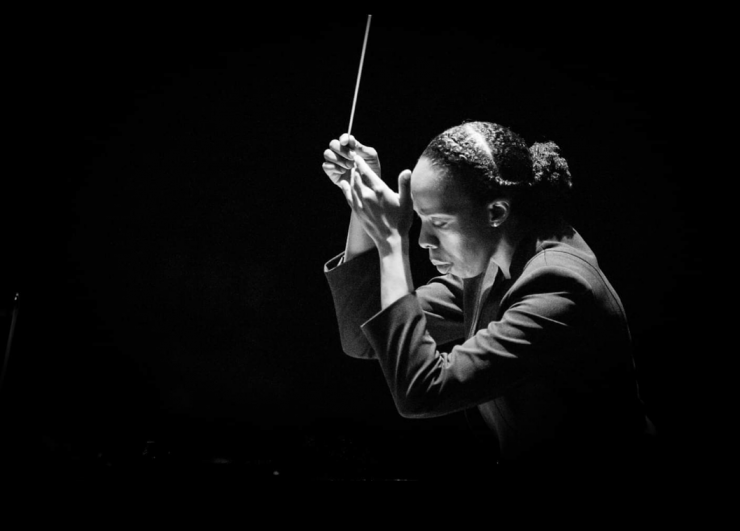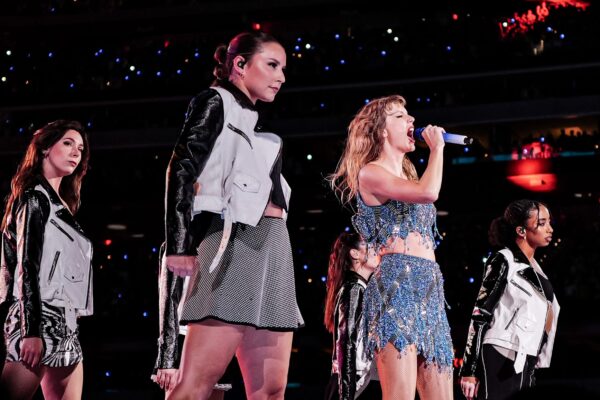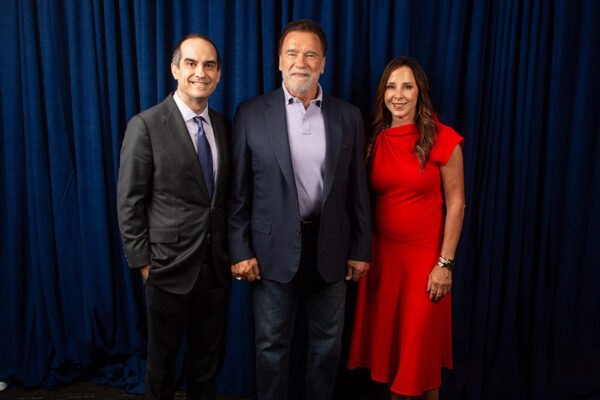Imagine you’re conducting an orchestra for a 2,000+ person audience at the Orpheum Theater in Memphis. And the headlining performer of the night is Broadway mega-star and creative game-changer Leslie Odom Jr. of “Hamilton” fame.
You might be a tad nervous, sure. But if you’re Chapman University alumna Kalena Bovell ’09, confidence wins out over jitters. Such moments are precisely what she’s trained for.
“I stepped onto the podium for the first time and I feel like I’m with friends,” Bovell says.
Star Struck
She’s a seasoned professional, and she knows exactly how to prep for the fast pace of a pops-style concert, which often includes many newcomers to the symphony experience. But the assistant conductor of the Memphis Symphony Orchestra admits she still got a little nervous to work with Odom.
“I’m a huge fan of Mr. Odom. I think just about everyone is. Not only is he a singer with an incredible voice, he is a Tony award winner, Grammy recording artist and he is an author,” she says. “What he has done for music and the arts is amazing because he has made so many different mediums accessible.”
Still, at showtime, Bovell gave herself a mental pep talk.
“My thoughts when I first walked out were: I’m going to go out, walk in between the violins, take my place on the podium, shake the concertmaster’s hand, acknowledge the audience and after all of this, try to remember my speaking lines,” says Bovell, who studied at Chapman with Daniel Wachs, associate professor and director of orchestral activities.
She recalls that as she walked out and took her place on the podium, people applauded. Then suddenly, it was as though the air in the room changed, as though things had shifted.
Bovell is convinced that most audience members hadn’t realized a black/Latina woman would be at the podium. The applause grew louder and the audience started cheering.
From there, she launched into leading over an hour and a half long fiery performance filling, the Orpheum with music that resonated off the walls and into the lives of the watchers. At the gala afterward, she was overcome with attendees seeking her out.
“So many people of color, so many women, were telling me ‘You’re incredible. I’ve never seen someone who looks like me doing what you do.’ What I’m doing, beyond conducting music, is bringing visibility … It’s showing others who look like me that they too can do what I do; it’s bringing the possibilities that didn’t seem reachable before, to the surface. Not to downplay it, but it was a really cool feeling. I met wonderful people, from ushers to concert-goers, to board members, to people who lived down the street.”
Bovell recalls that one woman said she’d never been to the symphony, but the evening performance had persuaded her to plan a return visit.
“That’s the beauty of Pops Concerts – the audience is comprised of people who don’t necessarily go to the symphony. But they come, experience it and come back for more. For someone to say ‘I’ve never been but I want to come back’ – that’s huge. That’s what makes it meaningful.”
High/Low Notes
Bovell’s career choices have always been focused on increasing community diversity, accessibility and audience engagement. She’s passionate about closing the gap in regards to who and what is presented in performance and how that resonates and relates to audiences.
“The arts are a great uniter across ethnic and gender divides, however, there are still many misconceptions about who the arts are for.”
Bovell believes the arts are for everyone.
And, the historic locations of the arts are within city centers, where surrounding neighbors generally do not reflect the perceived demographics of an older, whiter audience. Note the language here is “perceived” — arts attendance is beginning to skew younger and more diverse.
However, according to the League of American Orchestras, representation on the stage is shifting: The percentage of musicians from black and Hispanic/Latino backgrounds is growing, predominantly in smaller orchestras.
Conductors from black and Hispanic/Latino backgrounds are more likely to be employed by larger orchestras than by smaller orchestras. Women conductors are still rare, especially in the high-status position of music director.
Just by being herself, pursuing her talent and passion, Bovell stands out and in the front of progress.





